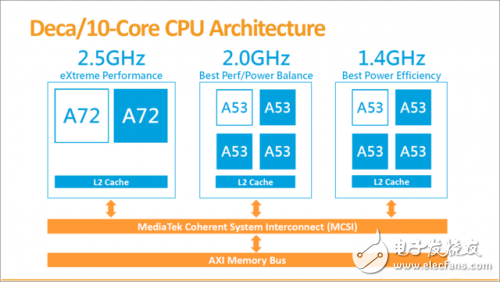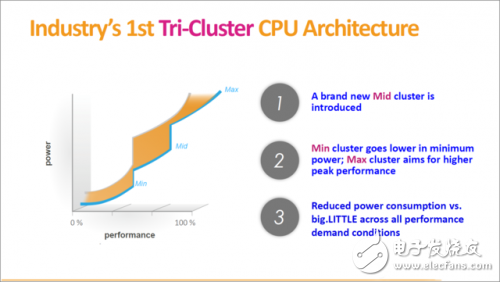In the mobile processor market, Qualcomm used its cutting-edge technology to nearly monopolize the high-end flagship model of the entire market. As consumers, we naturally do not want to see the emergence of monopoly, because monopoly technology means monopolizing prices, which will make it difficult for us to obtain more cost-effective products. In May 2015, MediaTek launched the Helio X20, and the first 10-core core Netcom processor MT6797 came out. For the flagship processor, MediaTek's progress is what we are happy to see.
MediaTek seems to always play the "nuclear" game. When other manufacturers do dual-core, MediaTek proposes a quad-core; when other vendors do quad-core, MediaTek proposes eight-core. Now, when other people are still in the eight-core, MediaTek has taken the lead to the ten-core. How big is the ten-core upgrade compared to the eight-core, and is the core number really proportional to performance?
Why do we compare the performance of the processor when we compare the performance of the processor? Is it really the running point that determines everything? The answer is obviously no, otherwise Apple's products can achieve such a smooth user experience. So what can we see behind the MediaTek Helio X20 ten-core processor? How its full Netcom impact on the entire industry will also be the focus of this article.

The launch of MediaTek's Helio X20 is technically innovative and breakthrough. Its main features are as follows:
â— The first 10-core processor chip with Tri-cluster technology architecture;
â— The image sensor supports up to 32 million pixels. It is equipped with a built-in 3D depth engine with a dual main lens. It can shoot faster and create a more stereoscopic depth of field.
â— GPU performance is improved by 40%, video decoding supports 10bit 4K H.264/H.265/VP encoding, reducing power consumption by 30%;
â—MulTI-scale de-noise engines, which maintain sharpness, detail and accurate color even in harsh shooting conditions, producing high quality images;
â— Support 120Hz mobile display (120Hz mobile display), breaking the current barrier of 60Hz screen update rate, providing clear, real-time browsing experience and unparalleled dynamic images;
◠Integrated Low power sensor processor – ARM Cortex-M4, supports multiple always-on mobile applications such as MP3 playback or voice control. This inductive processor has an independent energy management system that can work in a low-power environment without relying on the main processor to consume more power.
Processing architecture: How is the Helio X20 composed?
â– New Tri-Cluster architecture
We all know that the eight-core processor before the Helio X20 is a big.LITTLE structure that solves one of the challenges facing the industry today: how to create a SoC that has both high performance and excellent energy savings to extend the battery. Service life. Big.LITTLE is not a panacea. When you want to break the performance gap of the prior art, you need other results to match. Therefore, MediaTek has proposed Tri-Cluster to solve the existing technical bottleneck.

MediaTek Helio X20 ten-core processor uses Tri-Cluster structure (picture from MediaTek)
Although different from the big.LITTLE structure, we can easily understand the Tri-Cluster structure through the processing of the big.LITTLE structure. big.LITTLE controls the power and performance distribution by controlling the high-frequency and low-frequency coordination through the “size and core†collocation. The Tri-Cluster structure adjusts the processor in high and medium by controlling the coordinated operation of the å part. , low power consumption and performance allocation.

Each cluster is responsible for high, medium and low load operation (picture from MediaTek)
Inside the MT6797, the two A72 cores are responsible for the highest performance operation at a frequency of 2.3-2.5 GHz; the four A53 cores are responsible for balancing performance and power consumption at 2.0 GHz; the four A53 cores are responsible for low-load tasks and energy savings. The main frequency is 1.4GHz. Each cluster has its own L2 cache, which is then integrated through MediaTek's own Designed Consistent System Interconnect Bus (MCSI).
------------------------------------------
More technical hot texts can be downloaded into the "Intelligent Hardware Special Issue" in April! 
Tower Air Fryer,Air Fryer 3.5L,Digital Air Fryers,Industrial Air Fryer
Ningbo Anbo United Electric Appliance Co.,ltd , https://www.airfryerfactory.com